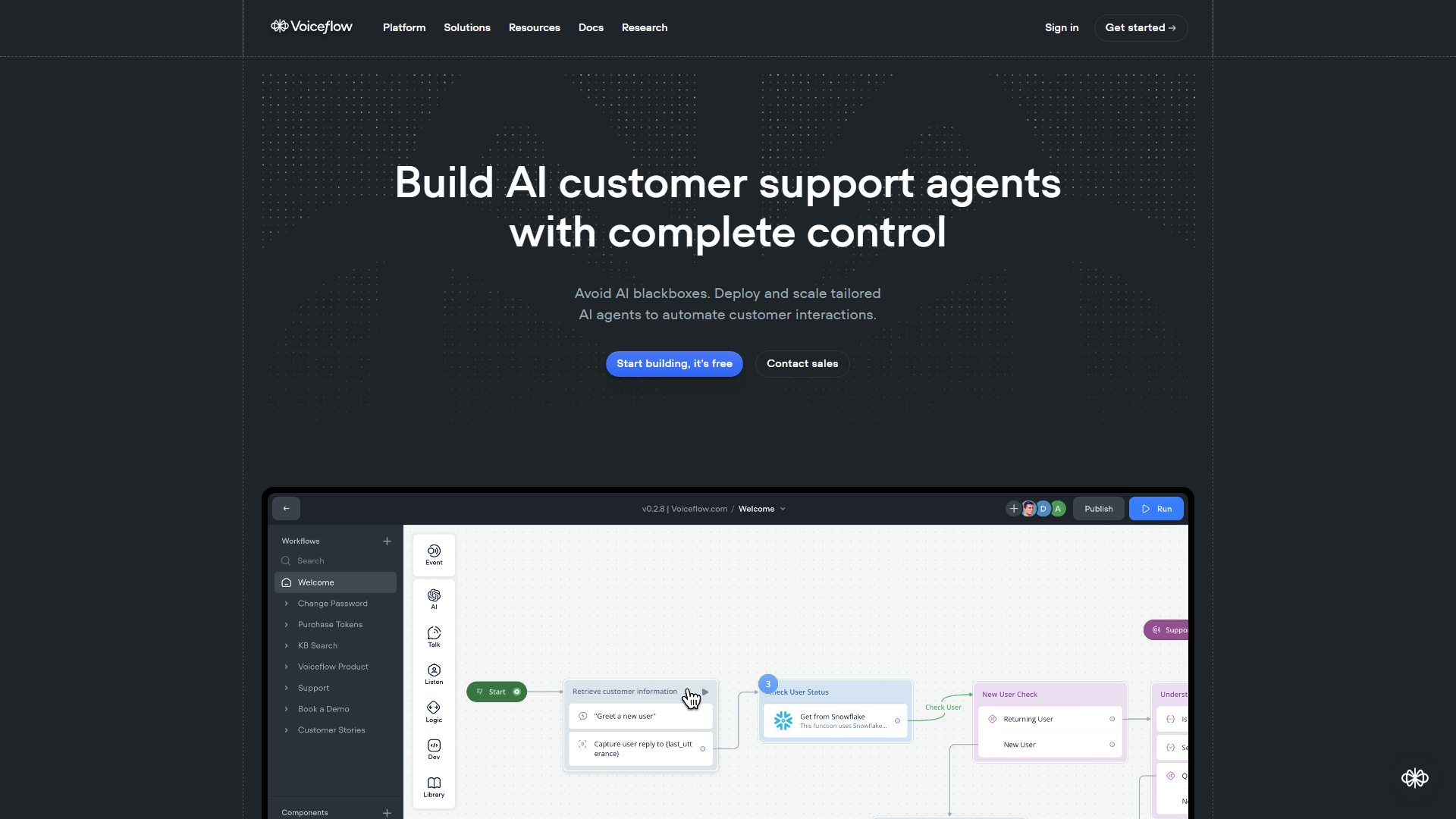Overview
Voiceflow is an intuitive platform designed to empower individuals and teams to craft AI-driven conversational agents, such as chatbots and voice assistants, with ease and precision. It caters to the needs of developers, designers, and businesses looking to automate interactions and improve user experience through advanced conversational design. With Voiceflow, users can enjoy a seamless interface to build, test, and deploy their agents, ensuring they meet specific use-case scenarios.
Beyond simple bot creation, Voiceflow offers a suite of sophisticated tools for managing content, arranging workflows, and integrating sizable knowledge bases. This ensures that the conversational agents created are both informed and responsive. The platform's capacity to support large language models (LLMs) like ChatGPT enhances its versatility, accommodating various AI model integrations for more nuanced and contextual interactions.
Voiceflow's emphasis on collaboration and teamwork is showcased through its real-time editing features, allowing multiple contributors to work efficiently on common projects. Comprehensive analytics tools further fortify the platform, providing essential insights into the performance and effectiveness of the deployed conversational agents, helping teams make informed decisions about adjustments and enhancements.
Key features
- Intuitive interface: Voiceflow provides an easy-to-use interface that simplifies the process of designing and deploying AI-powered conversational agents, making it accessible for users with varying levels of technical expertise.
- Advanced workflow tools: The platform features an array of advanced workflow management tools that allow users to efficiently organize content, integrate knowledge bases, and customize the behavior of their AI agents.
- Real-time collaboration: Voiceflow encourages teamwork by enabling multiple users to collaborate and edit projects in real-time, ensuring a smooth and productive workflow for teams of any size.
- Robust analytics: Comprehensive analytics tools are included to provide insightful data on agent performance, helping users assess and improve the effectiveness and responsiveness of their deployed conversational agents.
- AI model integration: With support for various large language models, including ChatGPT, Voiceflow offers flexibility and adaptability for creating dynamic and contextually aware conversational agents.
 Pros
Pros
- Supports multiple AI models: Voiceflow allows integration with a diverse range of AI models, providing the flexibility needed to tailor conversational agents to specific tasks and domains effectively.
- Seamless bot deployment: The platform ensures that deploying chatbots and voice assistants is straightforward and hassle-free, minimizing downtime and ensuring efficient operation.
- Tailored team workflows: Offering real-time collaboration and workflow customization, Voiceflow helps teams design bespoke processes that enhance productivity and creativity.
- Comprehensive support resources: With a wide array of resources, tutorials, and community support, users have access to the assistance they need to fully leverage the platform's capabilities.
 Cons
Cons
- Learning curve for beginners: New users might find it challenging to navigate Voiceflow's extensive features, requiring time and effort to fully master the platform.
- Limited free features: While the free plan offers basic functionalities, users may quickly outgrow it and need to switch to a paid plan to access more advanced tools.
- Complexity for simple projects: The platform's comprehensive tools may be more than necessary for basic conversational agent projects, making it less ideal for very simple implementations.
- Potential for feature overload: With numerous functionalities, users might feel overwhelmed by the possibilities, especially when trying to create straightforward conversational agents.










